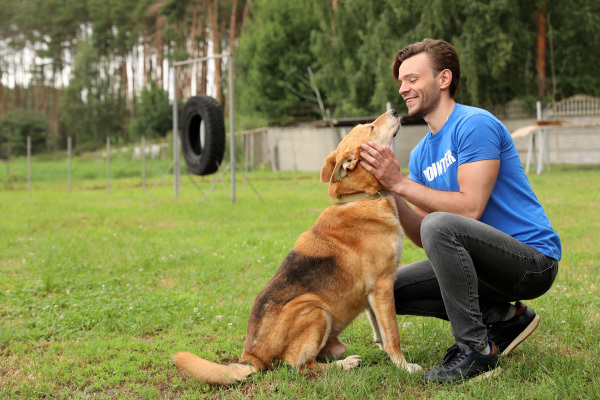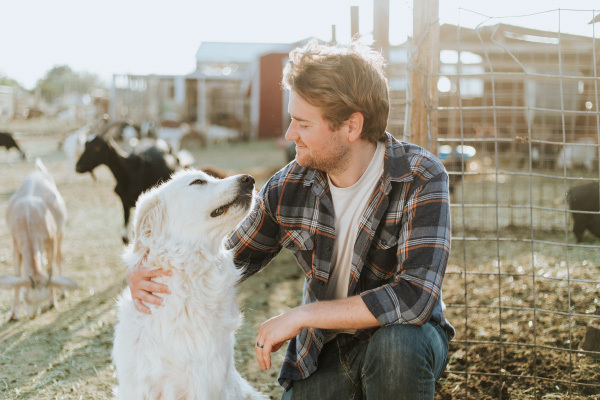 Fundraising for any nonprofit can be a challenging task. As an animal-related nonprofit, you often compete with other similar organizations, not to mention thousands of other deserving causes, for every donation.
Fundraising for any nonprofit can be a challenging task. As an animal-related nonprofit, you often compete with other similar organizations, not to mention thousands of other deserving causes, for every donation.
However, with a unique idea and thoughtful strategy, you can make your animal fundraising a roaring success.
In this guide, we’ll dive into a list of the best animal-centric in-person and virtual fundraising ideas for increasing revenue for your animal-focused nonprofit:
- Partner with a local pet store.
- Sell pet-related merchandise.
- Sponsor a class.
- Host a pet adoption event.
Luckily, you likely already have some cute pets, great partners, and robust software to leverage to your fundraising advantage. When considering these animal fundraising ideas, don’t forget the power a well-placed friendly rescue can have on your donors. Let’s get started!
1. Partner with a local pet store.
 Pet businesses—from kennels to dog washes—are a logical connection to your organization. In addition to direct funding, they can often offer your nonprofit numerous types of fundraising support. These include:
Pet businesses—from kennels to dog washes—are a logical connection to your organization. In addition to direct funding, they can often offer your nonprofit numerous types of fundraising support. These include:
- Selling your merchandise. Your local pet stores are already selling merchandise and services to their customers. It’s easy for them to add your organization’s products to their catalog and advertise that the proceeds of those sales will go to support your cause.
- Workplace giving. As part of their corporate social responsibility program, some businesses will match donations that their employees make to eligible nonprofits, effectively doubling or tripling their employees’ support.
- Brand recognition and publicity. Pet stores often have long, comprehensive lists of customer contacts who love animals and have money to donate. Adding a shoutout to your fundraiser in their next email or newsletter is low effort and can have a massive impact on your fundraising capacity. For example, you could leverage your partnership with a dog kennel to reach out to the customers in their boarding software to advertise a dog adoption event. (More on this idea below!)
- In-kind donations. While some pet stores may not be able to donate directly, they can often donate the extra stock that they can’t sell, such as pet food or toys.
- Volunteer support. Even if they can’t offer financial support, your local store may be able to provide staff to volunteer, helping at your fundraising events or in your outreach efforts.
Don’t limit your fundraising partnerships to solely direct monetary assistance. Over time, a partnership that begins as one type of support can blossom into many more. For them, they’ll likely generate improved employee engagement and a positive reputation in the community through their association with your philanthropic cause.
2. Sell pet-related merchandise.
Animal lovers tend to love spoiling their pets rotten. Thus, selling items made for (and about) their pets is an easy way to raise money for your cause. For this fundraising idea, the possibilities are nearly endless. Items you can sell include:
- Dog bowls
- Pet toys
- Pet grooming tools
- Pet apparel (such as dog shoes or a warm dog sweater)
- Human apparel (such as shirts, facemasks, and hats)
- Water bottles
- Mugs
- Tote bags
- Journals
When the items you sell are aesthetically pleasing and useful to buyers, they’ll do more than raise immediate funds. Supporters will keep and use your merchandise for a long time to come, and it will serve as a consistent reminder of the important work of your organization. To amplify this long-term impact of your merchandise, add subtle branded elements to every product you sell, such as your organization’s name, logo, colors, slogans, or fonts.
3. Sponsor a class.
Your organization likely has staff and volunteers with expert knowledge and training regarding various animals and animal-related causes. You can use this expertise as a fundraising tool by sponsoring paid classes or talks for your supporters and the broader community.
With this idea, participants will pay a fee to participate in a one-time or recurring class, such as a Dog Training 101. To fundraise for your animal cause by hosting a class, take the following steps:
- Consider community needs. While you may have ideas about the types of classes you can offer, it’s helpful to ask supporters and community members about the skills they want to learn and the classes they’d most like to attend.
- Find skilled, knowledgeable teachers. Consult with your staff and volunteers about their expertise and if they’re interested in sharing that knowledge. For new teachers, offer support and training to prepare them to lead an effective class.
- Locate an accessible space. Will pets be present? If so, you’ll want to use an area that’s accessible and easy to clean up.
- Determine the cost. How much will you charge for each class? Consult with trusted members of your target audience to determine the right amount to charge for each class.
- Market your classes. For your classes to be successful, you’ll need an audience. Thus, advertise your event ahead of time across your various marketing channels. Describe the cost, learning objectives, meeting times, dates, locations, instructor’s background, and your contact information.
According to Gingr’s dog grooming software guide, you can leverage software solutions to reduce the stress of manually scheduling and ticketing for your classes. Use technology to your advantage by sending automatic updates and reminders to participants, as well as promotions and discounts for future classes.
While a class may begin as a one-time fundraising venture, as you build long-lasting relationships, these can become a regular tool that brings consistent revenue for your organization.
Remember, the people who join a class you offer may not be your regular donors and could be new to your organization. Thus, you should always introduce classes to your organization’s mission and additional opportunities for attendees to get involved.
4. Host a pet adoption event.
 If you’re an animal rescue—or support animal well-being in any way—hosting a pet adoption event is a great way to attract supporters who care about animals while simultaneously fulfilling your mission of placing pets in loving homes.
If you’re an animal rescue—or support animal well-being in any way—hosting a pet adoption event is a great way to attract supporters who care about animals while simultaneously fulfilling your mission of placing pets in loving homes.
Use your event to raise money from attendees by incorporating additional, engaging elements, such as:
- Selling food and drink.
- Holding challenges or activities.
- Hosting an auction.
- Selling merchandise.
Ultimately, an adoption event does more than simply raise much-needed funds. It also builds a positive community around your organization, deepening relationships with community members new and old.
When choosing the right idea for your next fundraiser, ensure that you’ll have buy-in from key stakeholders—your staff, volunteers, loyal donors, and board members. Nothing’s worse than an otherwise great idea that simply doesn’t connect with your target audience.
Wrapping Up: Three Easy Tips for Animal Fundraising
 Don’t stop at the idea stage! If you don’t implement best practices, your fundraiser is likely to struggle. For best results, couple your chosen idea with the following animal fundraising tips:
Don’t stop at the idea stage! If you don’t implement best practices, your fundraiser is likely to struggle. For best results, couple your chosen idea with the following animal fundraising tips:
- Communicate across multiple channels. We’ve hinted at this above, but it’s important to state the importance of multi-channel communication outright. Since your supporters have different communication preferences—some use social media, others only respond to direct mail—it’s crucial to meet them where they are. Moreover, since it usually takes more than one request to earn a supporter, you should make this part of your regular fundraising practice.
- Automate with impactful software. You shouldn’t have to send your fundraising requests and marketing by hand. Instead, Revelation Pets’ recommends software that can automate and personalize communications from text to email with the click of a button.
- Make donating easy and rewarding. Finally, donating to your cause shouldn’t be labor-intensive. Set up your donation website to be easy to use on any device with a streamlined, intuitive design that guides supporters through the donation process.
As you move forward with your chosen fundraiser and the tips above, ongoing data collection and analysis are crucial for success. Track your fundraising metrics, including outreach response rate, donations received, and supporter retention. You can use these measurements to assess the quality of your approach and make adjustments to current and future campaigns. Good luck!
About the Author
Hi, I’m Casey Dorman! I’m the Sales Manager at Gingr software. Originally from Indianapolis, I now live in Colorado with my wife and dog, Dexter. Our hobbies include hiking, skiing, and visiting local breweries.







Leave A Comment